The Article
TURNTABLE BUYER’S GUIDE: RAW BEGINNERS!
20th November 2020

Looking to buy a turntable for yourself or loved one? Haven’t got a clue how to go about it? Paul Rigby presents his top turntable buyer’s guide plus some extra advice
Fashion. It can be a right pain in the neck, can’t it? As soon as something moves into ‘vogue’, everyone has to have one and, if the fashion is of a technical bent then the larger populace suddenly has to do a crash course in physics, maths and engineering to get their heads around it. Or that’s how it seems to those raw beginners who are faced with buying a turntable.
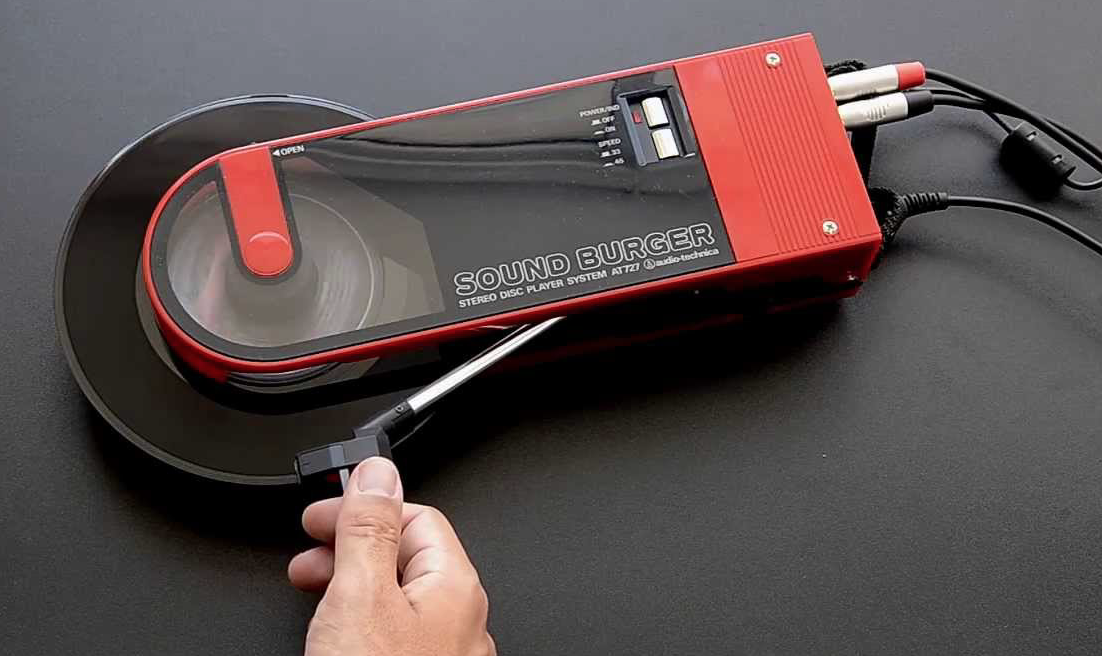
At the moment, vinyl records have become terribly popular…again. Of course, this is not the first time. Vinyl was the only serious game in town from the 50s until the early 80s, if you wanted to listen to music (I say ‘serious’, there were other options like cassettes and the like out there too).
During the early 80s, CD was introduced and everyone declared vinyl to be a dinosaur, dead and buried. Incredibly, this particular flexible friend has not only survived the CD onslaught but also the download scene and it refuses to move when faced with streaming, laptops, mobile phones and multi-room audio.
Maybe that has something to do with the fact that vinyl is a physical medium. This is music you can actually hold in your hands. It also has value as a second hand item, it is tactile, it is a perfect canvas for expressive sleeve art, it often contains easily read lyrics and interesting notes plus additional artist memorabilia within its packaging.
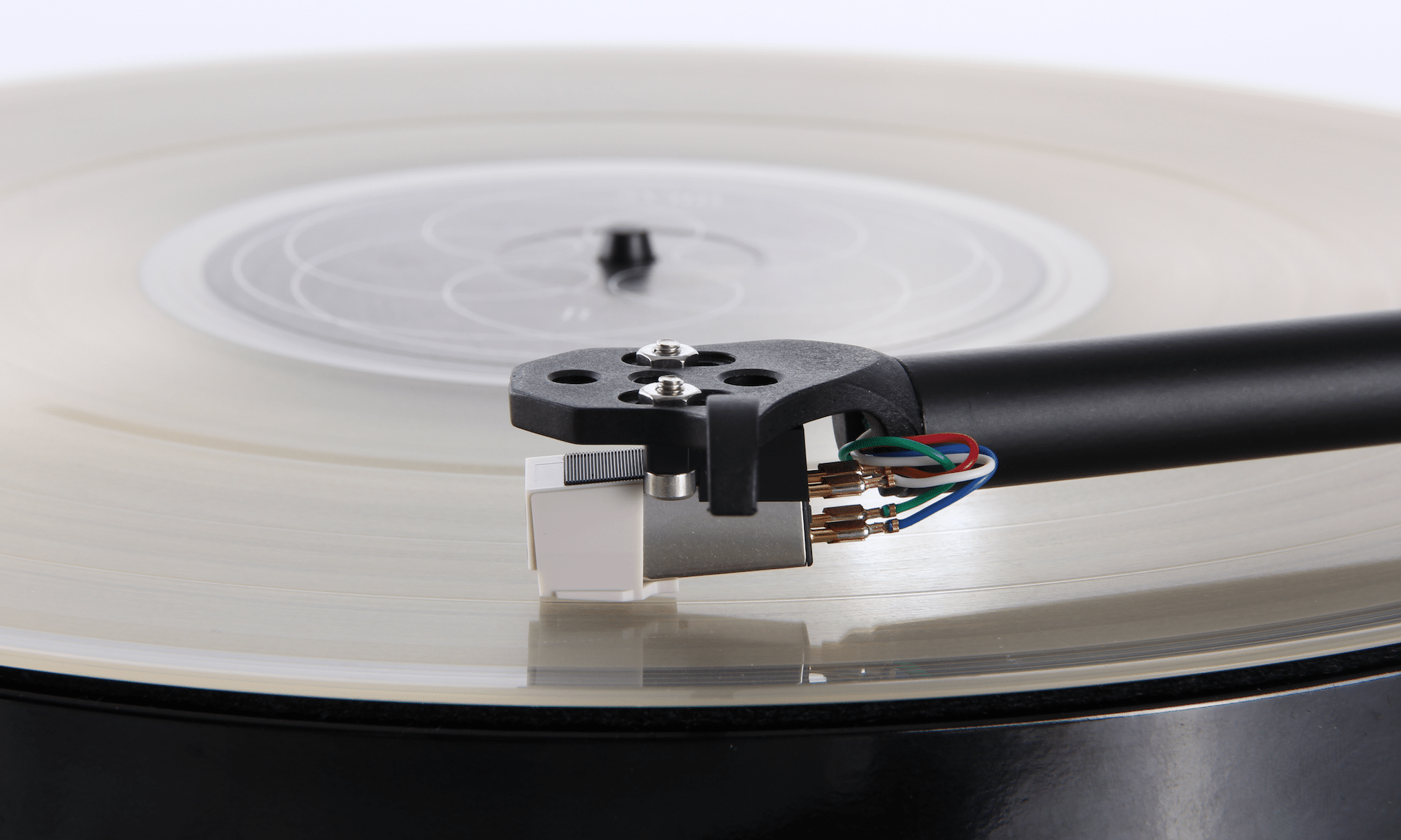
More than that, despite what fans of digital music (i.e.: CD, downloads, etc) will tell you, vinyl offers the best sound quality of any music source currently available on the planet (except reel-to-reel master tape but new albums on that medium costs around £475 each, so we’ll gloss over that one) and provides the best value. That is, you can get better sound quality from a cheap vinyl system than a similarly priced digital system.
I addition, the more money you throw at a vinyl system, the more those records will reward you. There is no upper limit because analogue has no sonic limit. So, I currently have a turntable here worth in excess of £10,000, a bit more than the turntables on show here and the sound quality from it and the similarly priced components it is attached to is simply staggering. I don’t say that in an attempt to impress you, I offer these words because, if you pursue and continue the vinyl adventure from the early beginnings available below, if you decide to invest more money and upgrade your hi-fi over the months, years and decades, then your vinyl will constantly reward you with improved sonic quality. If not, you’ll still have a ball.
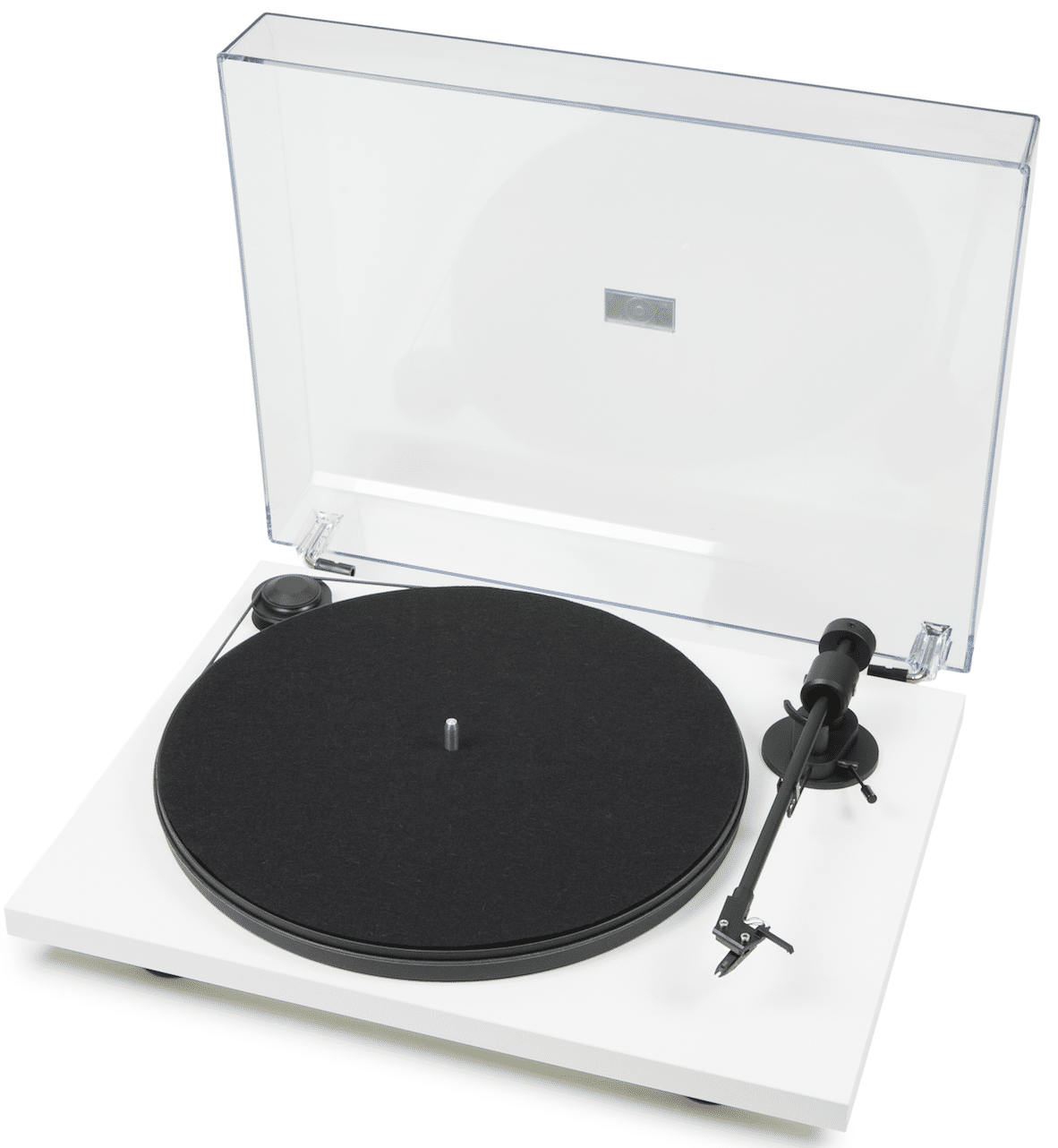
CAN WE GET DOWN TO BUSINESS?
Sure, enough of the future. What about now? Let’s assume that you are either buying a turntable for the first time for yourself or are buying the same for a friend or relation. Before we get into the nitty gritty of choosing a turntable, you should ask yourself a few questions first.
1: Budget: how much do you want to spend on this turntable?
2: System: if you buy a turntable and that’s all you have in your possession, don’t think “Job done!” In the majority of cases, you will not be able to get any music from a turntable itself. You will need to think about a few other components to attach to the turntable first, such as an amplifier and speakers. There are exceptions to that and we’ll get to those later. Of course, all of this might affect your budget.
3: Space: If you are buying a turntable…and amplifier…and speakers. Where are you going to put them all? This little lot can take a fair portion of acreage. A vertical shelf system is a good idea although, for the beginner, any available flat area will get you started, at least.
4: New or Second Hand? There are Pros and Cons around this question. ‘New’ means that everything works, everything is shiny, whole and in one piece. You also have an easier time of it if something goes wrong. But you pay a premium and, it could be argued, the value for money quotient is lower. Second Hand? You can buy top quality for a relatively low price. An expensive item released in 1985 and worth a few thousand pounds in today’s money might be available on eBay for a couple of hundred, for example. Downside? With any second-hand purchase, you know yourself that you have to be wary of the seller, to some extent (although the likes of eBay help you out on this one by ‘rating’ their sellers to encourage a sense of trust), do all of the parts in the sale item actually work as advertised? Are there any issues? Any problems waiting to happen? For secondhand purchase, you really have to ask lots of questions.
So let’s address that now.
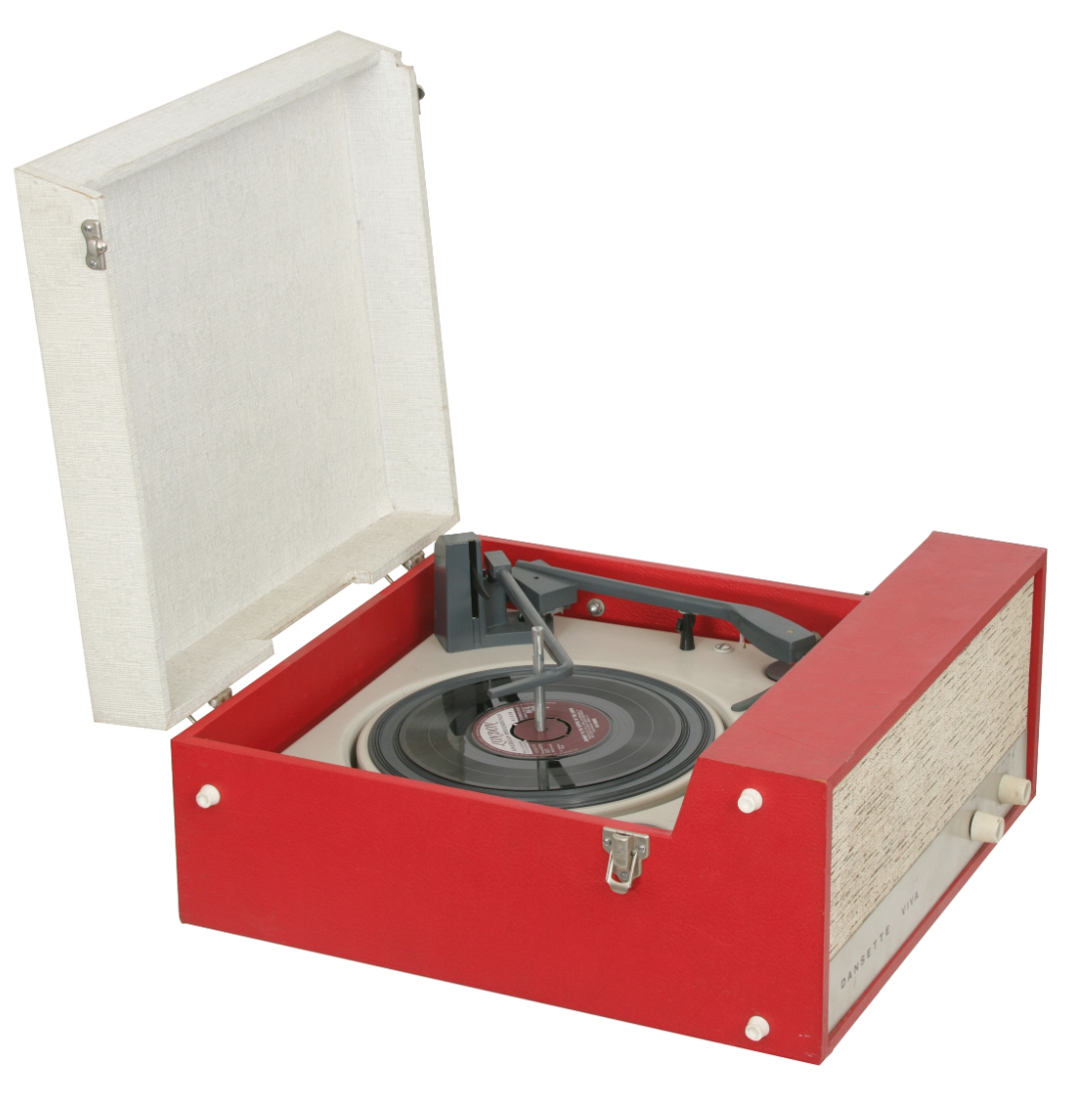
HOW DO I BUY A SECOND HAND TURNTABLE?
If you want to buy second hand then there is plenty of general advice on offer from the likes of eBay, accessible readily within their site. Over and above that, if you want to buy a turntable, you need to ask the buyer several questions.
A: Firstly, is the cartridge/stylus new? (The cartridge is the body that holds the stylus/needle and is often sold as a single unit – sometimes the stylus can be separated and replaced. If not, you may have to buy an entire new cartridge.) If it is not new, when was it last replaced? If it hasn’t, to be safe, you need to buy a new one. Factor that into your budget. There are plenty of available sources for these things. One of them is Musonic (www.musonic.co.uk). This chap has around 10,000 different styli on his books so your proposed purchase should be in there somewhere.
B: The platter, the rotating flat surface that the record sits on, does it move freely? If it moves yet emits a scraping sound then there might be issues with the internal bearing or something under the platter causing an obstruction.
C: The arm, the piece of metal/plastic that holds the cartridge/stlus, does this move freely? Again, if not there could be problems afoot.
D: Does the turntable sit properly? Is it level? If not, there could be a support problem.
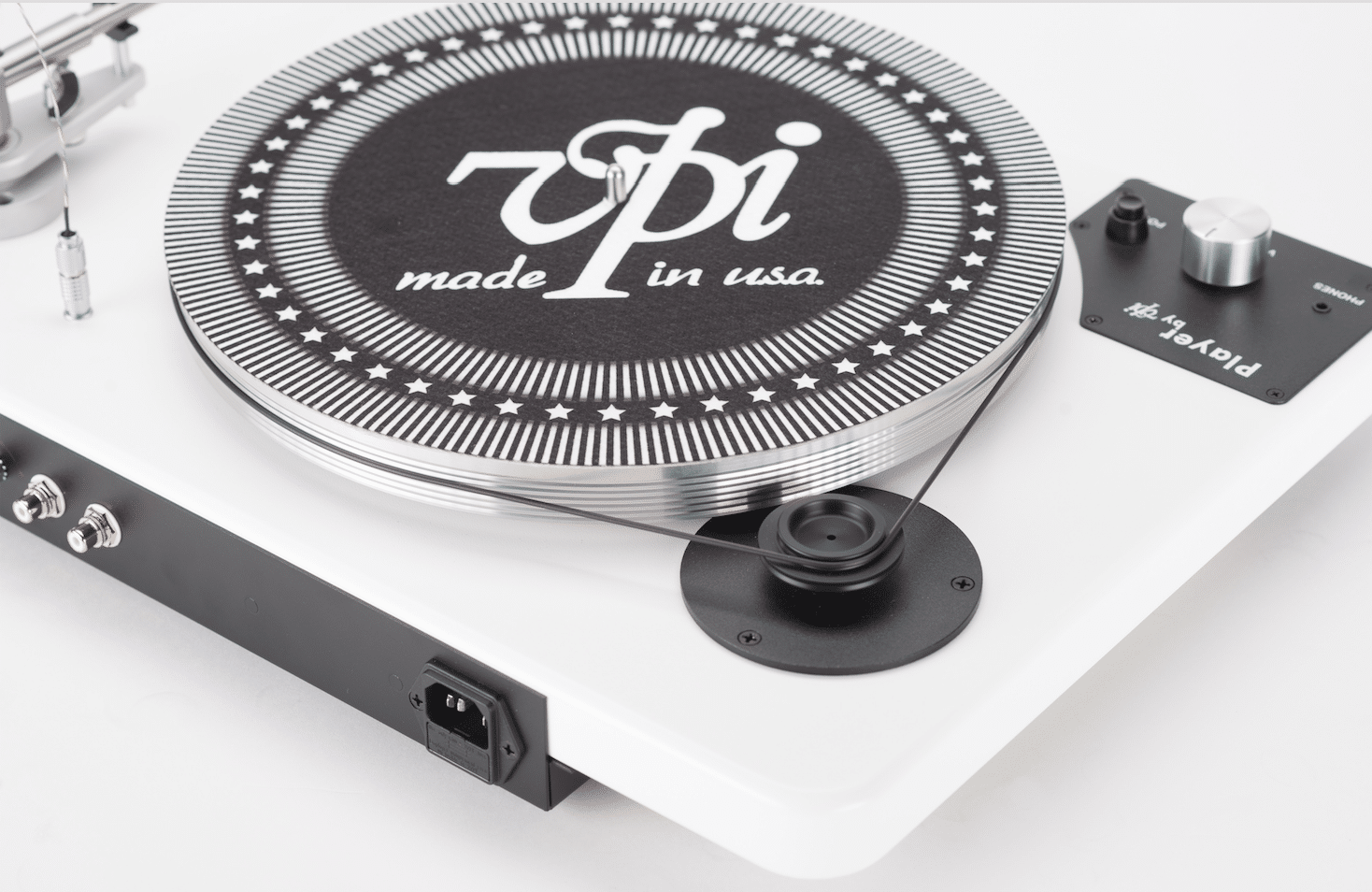
E: When it’s ‘doing its thing’ and playing music. If you reach around the back and twiddle the wires, do you hear a crackling noise? If so, then there may be electrical connection issues.
F: Speed Consistency. When the music plays does the speed change at all, moving slower then faster? Maybe the belt needs changing because it has stretched or is slipping.
G: Overall condition. Take a look around the chassis. Does it look battered, chipped, unkempt, excessively dirty and mucky? If yes on all of these matters then be suspicious.
H: Are the original accessories with the turntable? For example, did the original arrive with a lid? If any of the original accessories are missing then this can be a useful bargaining point for a turntable priced relatively high.
I: Packaging. Does the seller retain the original packaging? This is important because the original packaging will provide the bits and pieces of your turntable with proper support and protection during posting. If you insist that the seller send the turntable via a courier and the turntable does NOT have the original packaging then the seller might have to make it up as he goes along. You are then at the mercy of his packaging skills. Also, couriers are lovely people and generally very efficient but also have a reputation of delivering sensitive pieces of hifi into something resembling a jigsaw. No original packaging? Think about picking up the turntable up yourself, in person.
J: Personal Demo or… Points A-I can only really be cleared up if you are there in person so, if at all possible, arrange an appointment with the seller for a demo of the item concerned. If you really cannot make it to the seller’s location and you are buying the item via someone like eBay, then ask as many questions as possible but always ask and wait for the replies on the official site. Do NOT have an offline conversation about the item, even if the seller adds financial inducements. Keep the chatting open and official. That way, if a later disagreement occurs and the seller is found to be lying about this or that, then eBay can track a record of your online conversation to see that the seller is in the wrong and that you are due compensation.
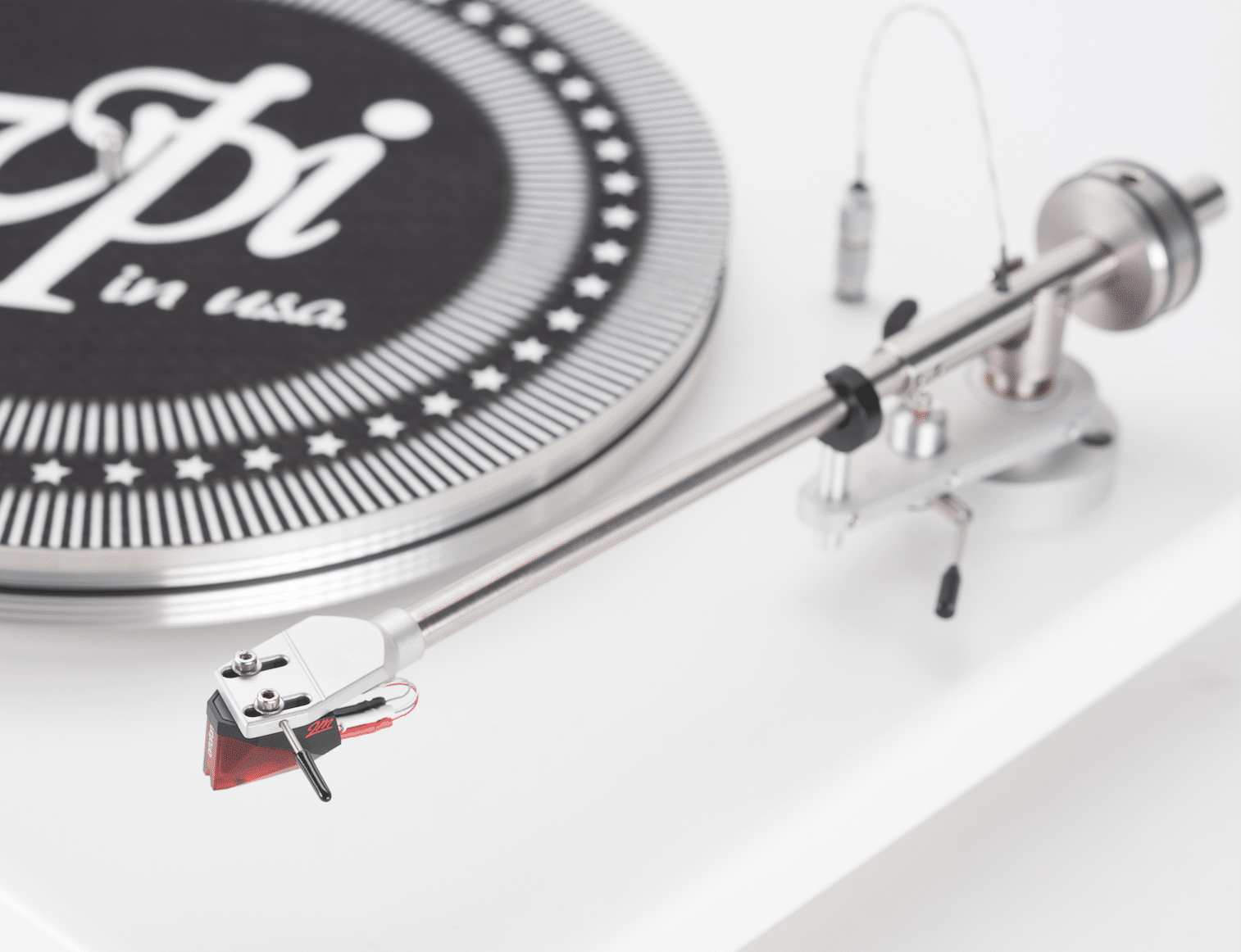
I HAVE AN ‘ALL IN ONE’ QUESTION
There are some turntables out there that arrive with everything that you need to play vinyl records and hear them too. All of the electronics are neatly hidden inside a single chassis. You simply plug it in, turn it on and bingo! You’re away.
There are systems which match this criteria and, if you really want such a system, then I will recommend an example or two for you later.
“So,” you might muse to yourself over a coffee and a biscuit, “how come all turntables are not like that then? Why is it that some turntables are sold separately along with amplifiers and speakers? Surely it would save a whole heap of hassle to pile the lot into one svelte box with a single plug?”
Of course, in an ideal world that would be so but the reason all turntables do not follow the ‘all in one’ approach is because of four major reasons:
1: Sound Quality. This is the biggy. If you squeeze a sensitive turntable with an even more sensitive cartridge/stylus right up close to a throbbing amplifier, pulsating with electricity alongside a bouncing and jumping set of speaker cones then sonic chaos ensues. OK, I exaggerate a tad. Well, look, if you hear such a system on its own, what you hear is a reasonable musical output. But, if you placed such an ‘all in one’ system next to a similarly priced system which has a turntable, separated from an individual amplifier which is also separated from individual speakers, then you would clearly hear the difference and how much nicer a ‘separates system’, as it’s often referred to, really is. In this light, by comparison, the ‘all in one’ would sound rather chaotic.
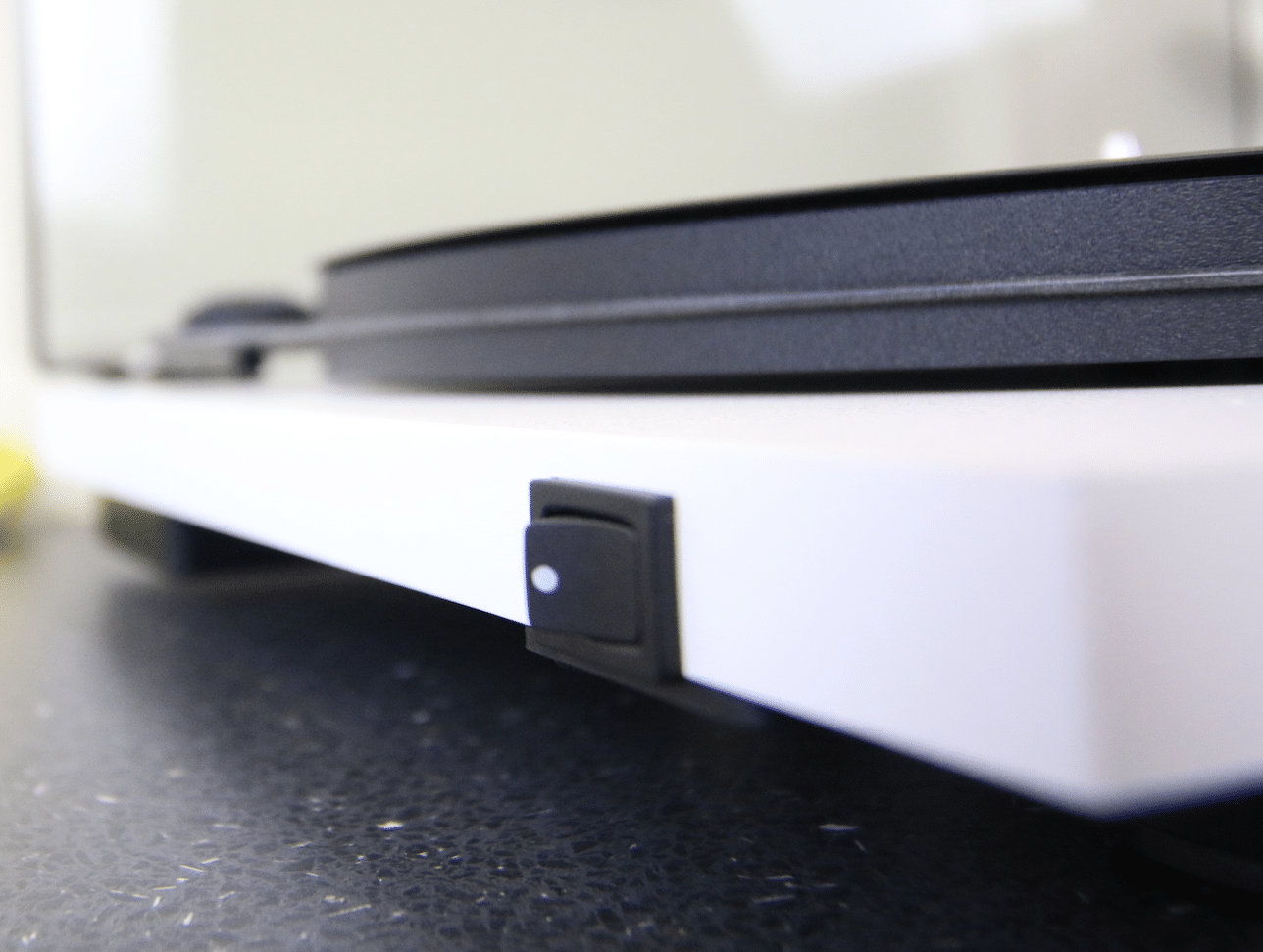
2: Mix and Match. An ‘all in one’ tends to derive from a single source company. That company might make reasonable turntables but do they make the best amplifiers on the market for the price? How about speakers? Going down the ‘separates’ route allows you to obtain better value for money by cherry-picking components.
3: Upgrades. If you find yourself financially flush later on, you can always improve a separates system, one piece at a time. That is, you can buy a better turntable, amplifier or speakers as funds allow.
3: Quality/Style. It’s easier to maximise the performance of an item if you provide room to fit quality components within. An ‘all in one’ tends to provide a claustrophobic chassis to work with. Also, given the same space, you can give each component impressive styling to boot.
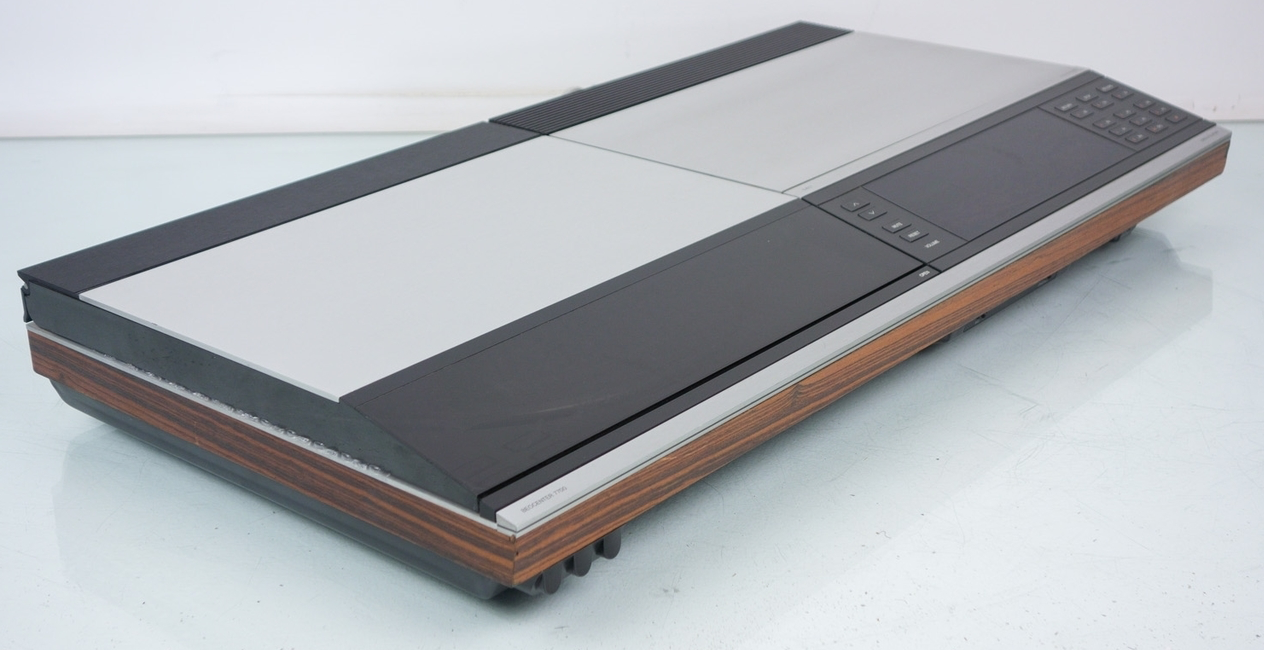
WHAT DO I NEED TO BUY TO MAKE MUSIC?
If you do decide to buy separate components, what exactly do you require? The first and most obvious is the turntable itself. These days, low budget turntables tend to have a semblance of friendliness about them, veering towards the ‘plug and play’ status of much of today’s consumer technology. Well, nearly. You may have to complete some minor assembly but the task should not be an onerous one. Hence, the manufacturers of these designs often fit the arm and the stylus for you and set both up correctly with cables included (You’ll find, on more expensive turntables, that the arm might be a separate purchase as well as the cartridge/stylus bit and even the cables too.)
OK, so you’ve got your turntable: now what? You need to grab an amplifier. This will boost the signal from the turntable so you can hear what’s going on. Generally, you can plug your turntable directly into the back of many amplifiers and be done with it.
When you plug a turntable into the back of an amplifier what you are doing is plugging the turntable’s wires into a bit called a Phono Amplifier. This is a specially designed mini-amplifier that sits, buried, inside the main amplifier casing. This little module looks after the turntable. When you get your amp, take a look at the back and you’ll probably see the word ‘Phono’ printed next to the appropriate sockets. Thats the only bit of the Phono Amplifier that you’ll see or need to see. That’s where the turntable cables need to go. The only fly in that ointment is if the turntable holds the Phono Amplifier itself inside the turntables chassis. In that case plug those wires – not in the main amplifier’s Phono sockets – but in another free pair. There’s normally a wide choice and they feature labels such as Aux or CD or Tuner. All these are ok if you have a pair spare.
What happens if you look behind your chosen amplifier and you don’t see the word ‘Phono’ adjacent to any sockets and your turntable doesn’t arrive with a built-in Phono Amplifier? This is a possibility. Don’t panic but do reach for your wallet/purse. What’s happened here is that the Phono Amplifier has not been included in the first place. Hence, you need to buy a stand-alone Phono Amplifier. The latter tends to arrive in a small chassis, much smaller than the main amplifier. The Phono Amplifier plugs into the amplifier and the turntable plugs into the Phono Amplifier. Don’t worry about what plugs exactly where at this stage. The included instructions will walk you through that task.
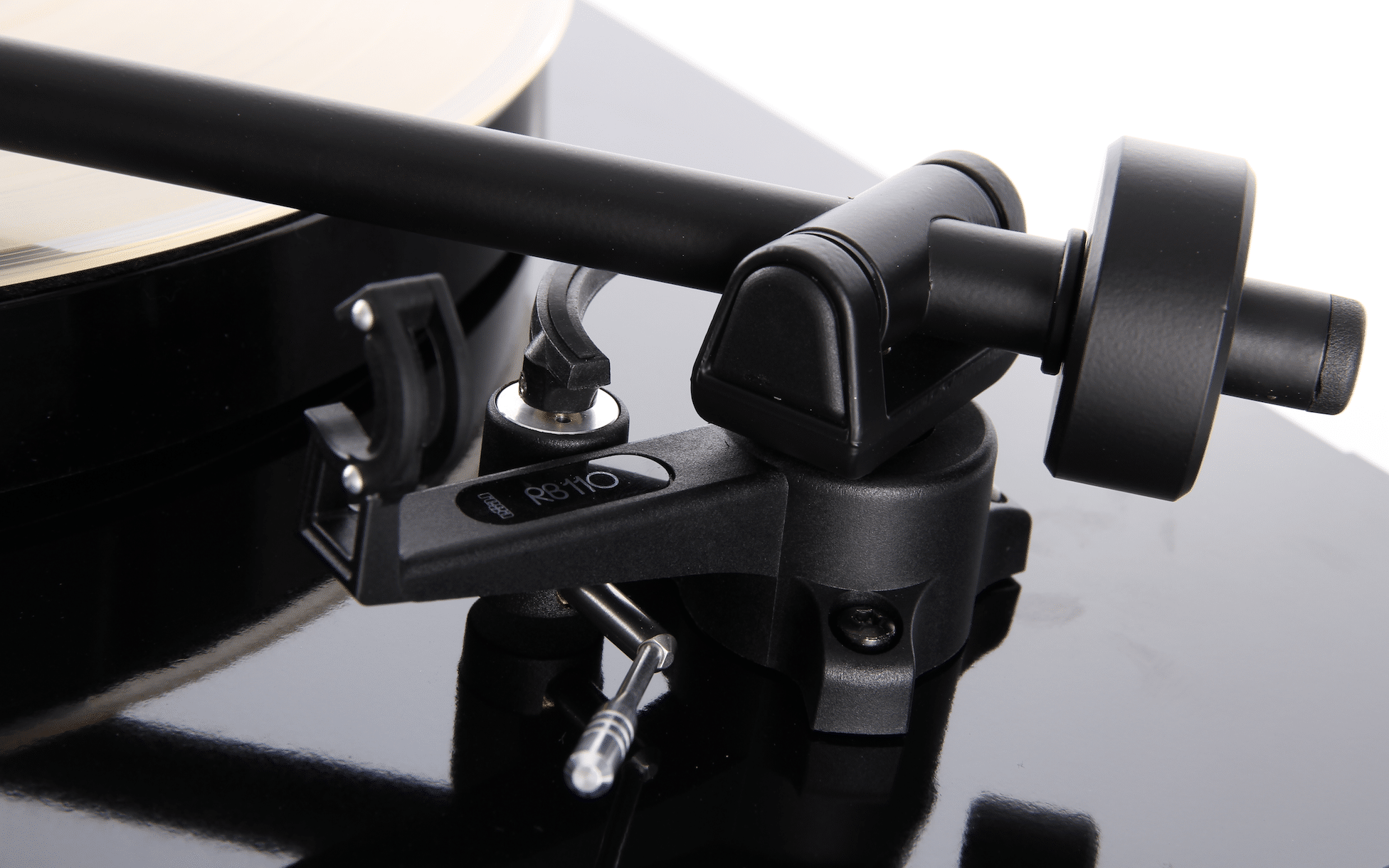
Next? You’ll need a pair of speakers. These also plug into the main amplifier. Speakers come in all shapes and sizes but I’d recommend spending more on your turntable, less on your amplifier and less again on your speakers. Some hi-fi users might disagree with me on this point but I believe that most of your budget should be invested on the source of the music. The more information and detail that you can extract from the source means nicer sounding music. Don’t forget, you can always upgrade these components later on.
There’s one alternative direction you need to consider when considering the above: active speakers. For those with a small amount of available space available for a turntable set-up or looking for greater convenience, active speakers might be the answer. They consist of a pair of speakers with an amplifier built into the speaker itself. Hence, you plug your phono amp into the speaker and the turntable into the phono amp. This choice gives you one less box to worry about.
In a nutshell, that’s it. If you have a turntable, amplifier (with or without a separate phono amplifier) plus speakers then you’re ready to go. Now, this feature is supposed to be about buying a turntable but I’m more than aware that there may be all kinds of new turntable/non-turntable related questions that may have just popped up in your head after reading the above. This is where my ‘After Feature Support’ service comes in or AFS which is an acronym I’ve just made up to sound slick and official. If you do have any issues and you’re reading this away from my website, then pop over there at www.theaudiophileman.com or Google ‘Paul Rigby’ and ‘Audiophile’, post your question (there’s an area at the bottom of the Home page) and I’ll do my best. If you are reading this from within my website then scroll down to the bottom of this article and post your question. There are no ‘stupid’ or ‘silly’ questions when it comes down to hi-fi. Everyone has to start somewhere, so ask away and don’t be shy.
This is a free service so, as such, please be patient for your answer, I’ll address your concerns as soon as I possibly can in between my regular work to pay the gas bill and feed the cat.
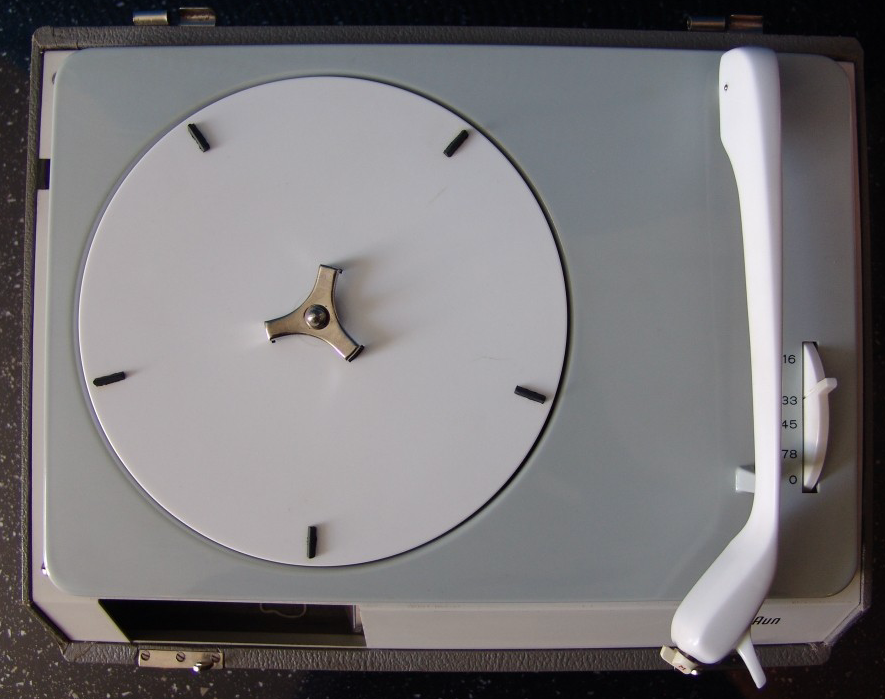
ARE YOU GOING TO RECOMMEND A TURNTABLE OR NOT, THEN?
Finally, we get to the turntable recommendations in this guide. A few notes about my selection (no sighing in frustration at the back there!) Firstly, I’ve tried to select different types of turntables. If I’ve neglected to mention your favourite turntable it’s not because I think badly of them, it’s just that I’m attempting to cover all bases for all people under different circumstances. There’s no point in basically repeating the same type of turntable 10 times. That helps no-one. I’m looking at many different types of user here. That also means looking at new and second-hand designs. I want to vary the field here and show the beginner that variety exists in the budget turntable market.
Secondly, I appreciate the different people have different lifestyles and differing amounts of cash in their pockets. Hence, I’m looking at varying budgets. In this case from around £150 up to £1,500
Thirdly, beginners need to be aware of one word which often surrounds the hi-fi enthusiast and the associated technologies: audiophile. This word relates to the search for sonic perfection and can start right here, if you so wish. Those looking for great sound are catered for but, I ask budding and veteran audiophiles directly, please don’t be upset if you see non-audiophile recommendations here too. Part of the reason for this feature is to get as many people onto the vinyl wagon as possible: however and whatever way I can. If that means recommending non-audiophile methods of doing that, then so be it.
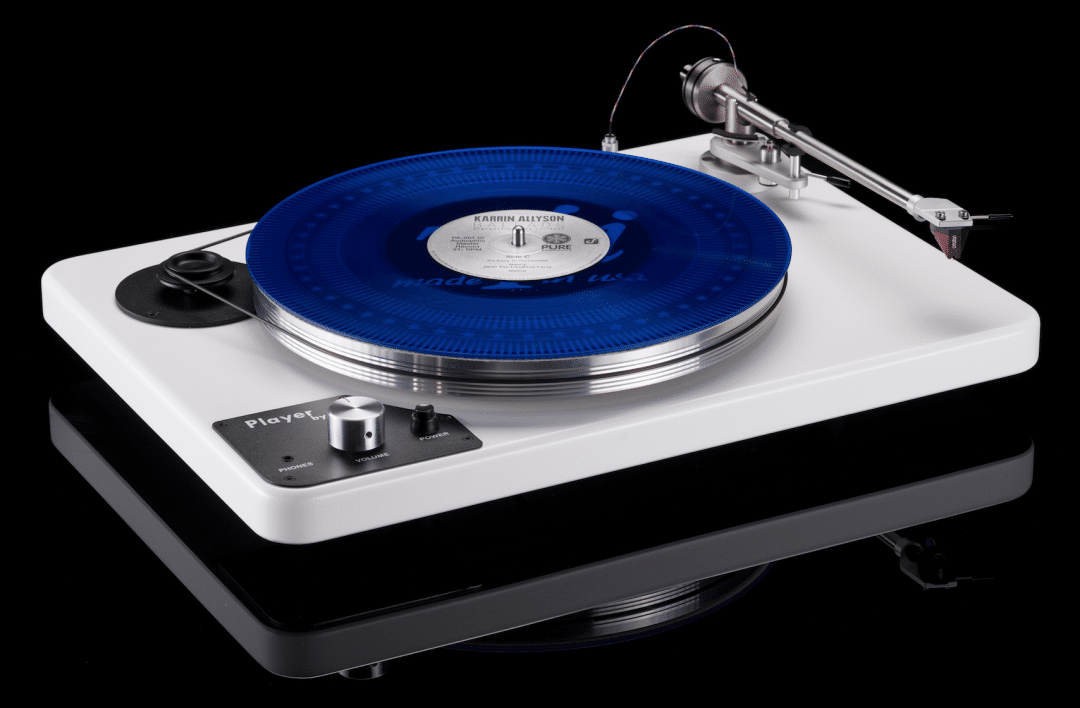
If you just want a basic record player to play some decent music and have no ambitions to go any further on the hi-fi upgrade pathways then great. I’m all for that. The aim here is to help you get the most out of your records and to help you to enjoy yourself.
Fourthly, there is one exception to the above. If you are a beginner and you are a reader of glossy supplements or have breezed through the High St of late then you will be familiar with a range of turntables that sit under brand names such as Crosley, Steepletone, ION, GPO and so on. These companies tend to spend more money on marketing than investing in product quality (It’s a ‘Bose’ way of doing business, if you’re familiar with that audio brand). These cheap and cheerful turntables often look appealing, some seem to feature innovative designs while others have a great looking vintage casing. All are available for low, low prices. The ION Audio Max LP is just £79, the GPO Style 3 is £35, the Crosley Cruiser is only £70 and all are available from Amazon et al. Bargain, no? Well, no. Not at all. These poorly built, poorly designed, poorly implemented disasters waiting to happen are put together in such a way as to look great, reel you in, take your money and let you struggle with the aftermath. Not only do they offer poor performance they, more importantly, threaten to damage your precious vinyl, partly because how they are put together more than anything else. Do me a favour, don’t go there. Take advice from your Uncle Paul on this one.
NOW? REALLY?? HONESTLY???
Yes, yes, ok.
I’ve tried to provide at least one turntable that addresses a particular type of beginner for this guide: and that type is noted in each sub-heading below. We all look for different things in a turntable. We are all individuals. So, no matter what you’re after, I hope you find your design here or, at least, a place to start looking. And you can always ask me for help if you need it. If I have done a review of the item or featured it in some way, then you can click on the highlighted name to see more. Here’s the first one then…
(All prices are at the time of writing and all are ‘real world prices’ to RRPs)
GUIDE TURNTABLE No.1
Where Price Is An Issue But Sound Quality Is Paramount
Price: £179
Contact: www.amazon.co.uk

One of the cheapest, ‘audiophile’ quality turntables currently on the market at the moment. It might off a simple design and its facilities might look a little bare but the sound it produces is top notch for the price. Helped by the useful free Ortofon cartridge. You can choose from a range of colours too.
GUIDE TURNTABLE No.2
AUDIO-TECHNICS SOUNDBURGER
Price: £200+
Contact: www.ebay.co.uk
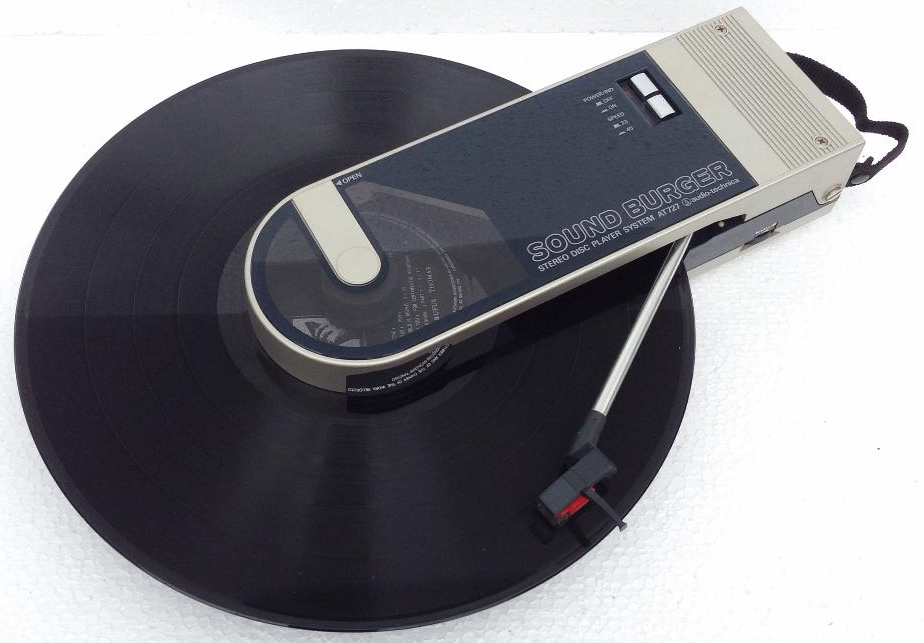
The best luggable record player ever. Now sadly deleted but available still via second-hand outlets (there are poor quality, copycat copies around for sale as new from competitors – avoid) this turntable arrives with a clamshell chassis. This lid opens up, you put the vinyl on the mini platter, push a rubber bung over it for stability, close the clamshell top and away your go. Arrives with a good quality stylus too. Solid and reliable, it sounds great.
GUIDE TURNTABLE No.3
An All-In-One At A Low Price
B&O BEOCENTER
Price: £500-£1500+
Contact: www.ebay.co.uk
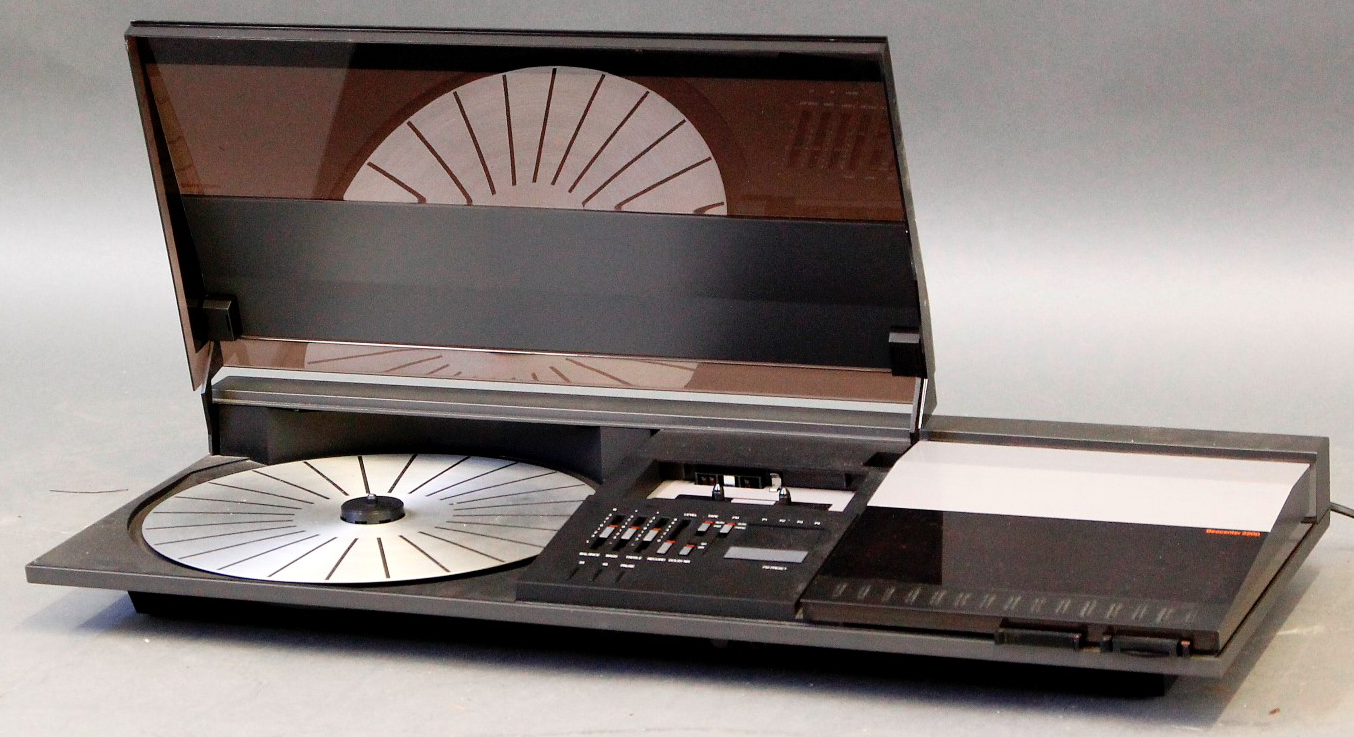
Plenty of second hand value and for those who want an ‘all in one’ system that should also include a radio and cassette deck plus style, style, style. If you want a great sounding system that you can show off at parties then this is the one to go for. I say ‘one’ but there are many variants of the Beocenter of differing specifications and prices and, being second hand, condition. Don’t forget, be cautious and wary but do look. Bang & Olufsen’s sound output is vastly under-rated.
GUIDE TURNTABLE No.4
For The Ultimate Budget Turntable
Price: £249
Contact: www.amazon.co.uk
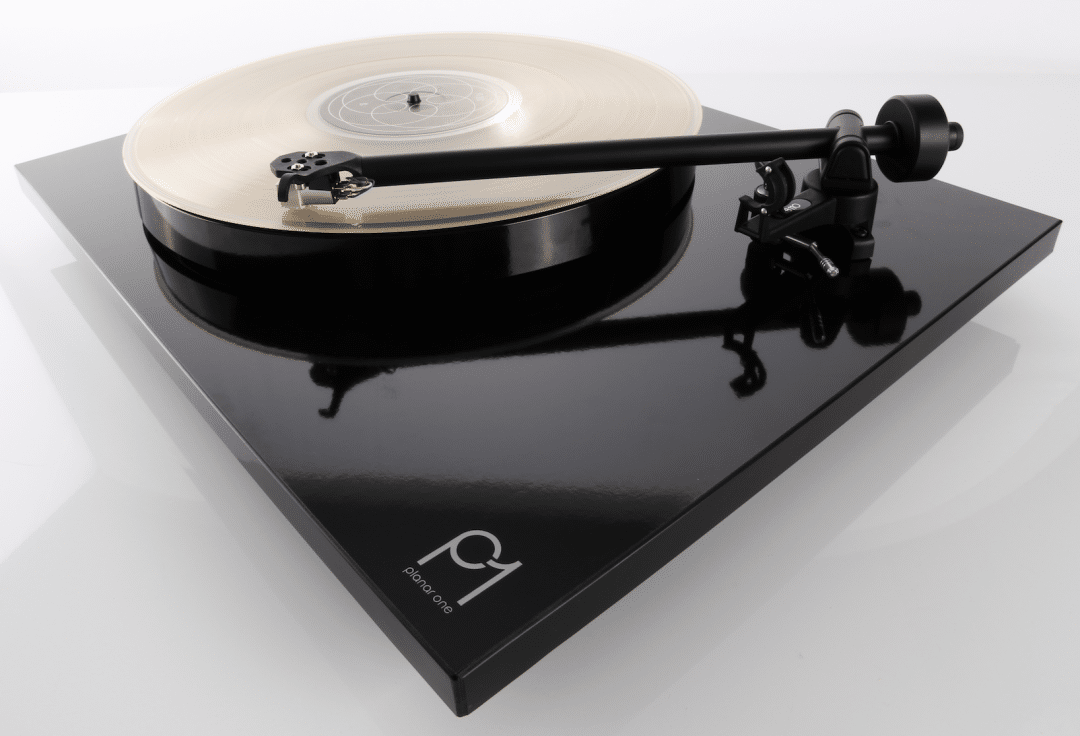
Rega is one of the turntable manufacturing legends of the hi-fi world. It’s been around forever and is highly respected while its turntables are all excellent. This is the outfit’s entry point. Well made and supplying great sound quality, it’s a good buy for those looking at sound as the ultimate priority. It’s not for a user who wants their turntable awash with features and toys, though.
GUIDE TURNTABLE No.5
Fancy Direct Drive And Toys In Abundance?
LENCO L-3808
Price: £199
Contact: www.amazon.co.uk
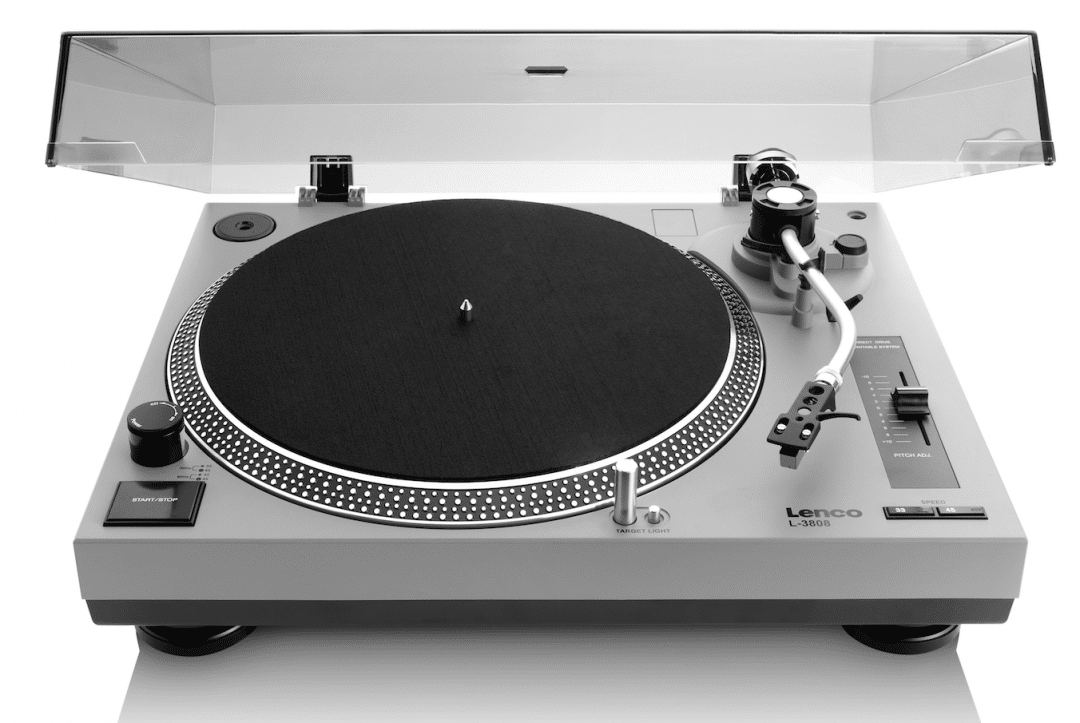
It’s a manual turntable but does include DJ-type facilities if you need it plus a USB port to ‘rip’ vinyl to a digital file and there’s a built-in phono amplifier. Ideal if your amplifier doesn’t have one and, thus, saving you money on buying an external mode. Also, you can plug this deck directly into powered speakers for a small footprint system. The highlight is the direct drive system which lifts the sound quality above others offering similar features.
GUIDE TURNTABLE No.6
A Blast From The Past And Vintage Vibes
HACKER RECORD PLAYER
Price: £400+
Contact: www.ebay.co.uk
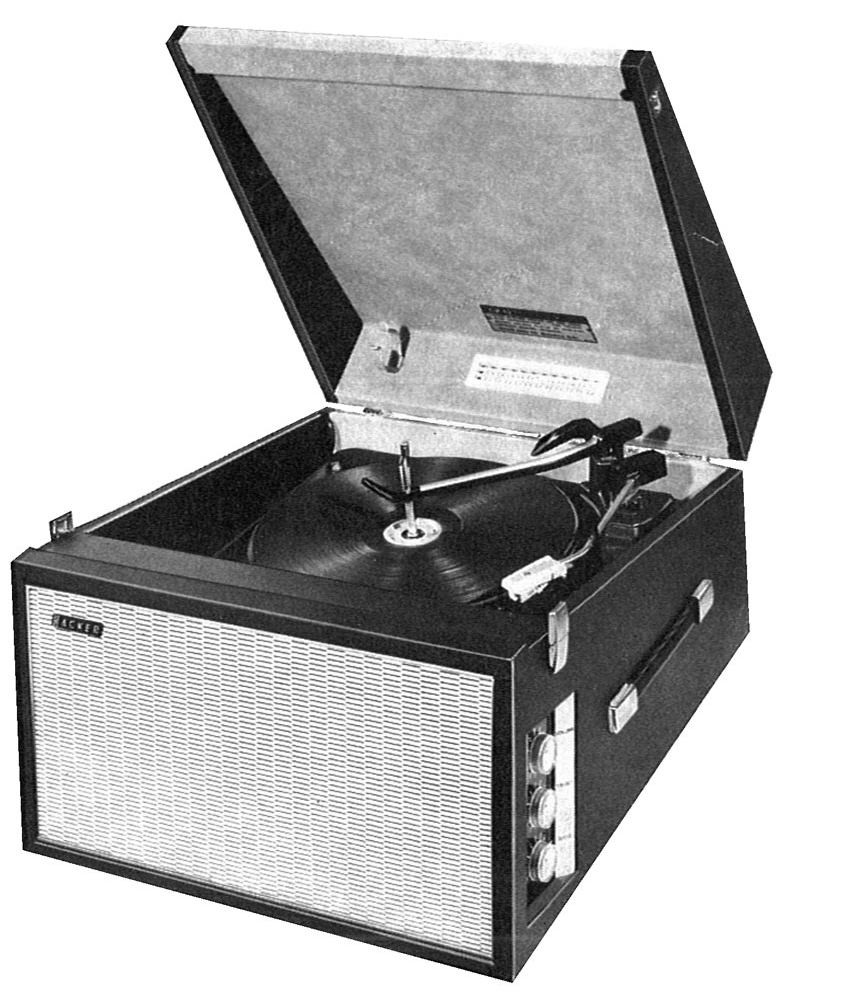
For some people, music and vinyl means the 50s, 60s and 70s and the ‘sound’ of a record player means just one thing, a Dansette or something similar. These little beauties are, in themselves, vintage collectables and feature everything you need within one (rather heavy) chassis. They sound sepia-tinged and very warm and are absolutely not audiophile in any way but they evoke a time and a place. If you can, buy one that has been fully serviced (and not one picked up from a car boot, unless you have the techie skills to service one of these things) because lots of things can go wrong with vintage items such as these. While Hacker is a top quality brand to head for, any brand toting a Garrard turntable is preferable than a BSR turntable or similar. Better build and sound quality.
GUIDE TURNTABLE No.7
Combining History With Style
BRAUN PC3 SV
Price: £450+
Contact: www.ebay.co.uk
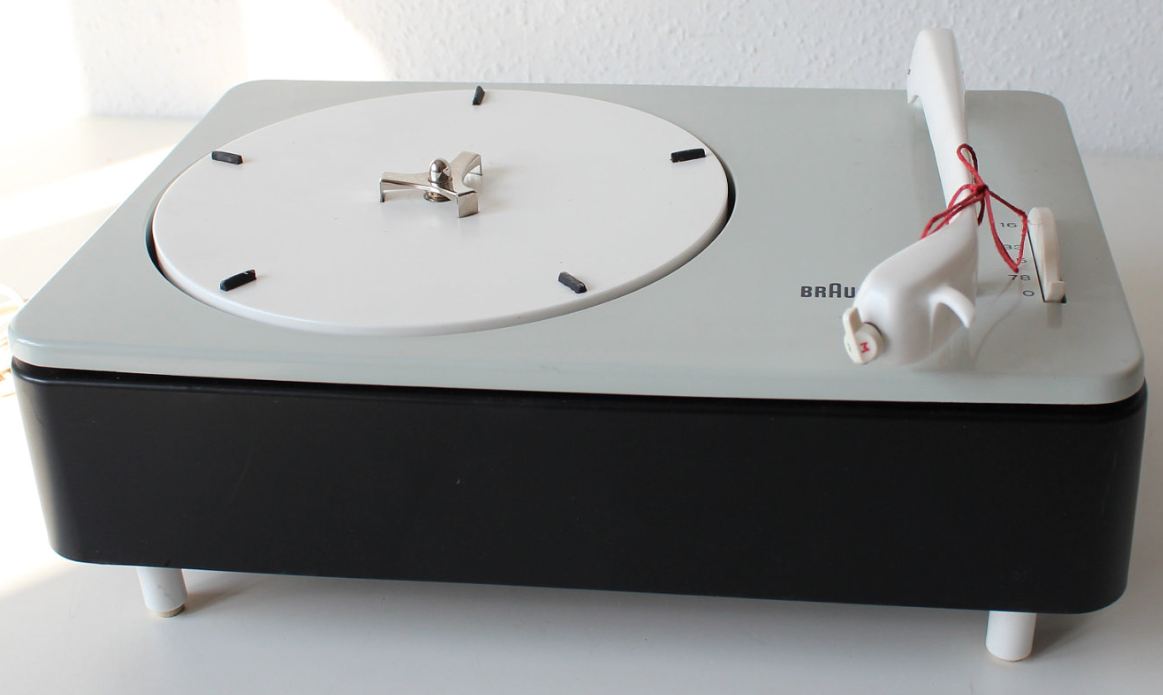
I’ve included this model for those who look upon the basic turntable design and yawn. For those who see design as the most important aspect of the contents of their home. For those who see art as the central focus. This turntable (built in 1959) is just one example (there are other turntables out there) of a series of classic Braun technologies that was created by renowned designer, Dieter Rams. Rams became a protégé of the Ulm School of Design (successor to the Bauhaus) luminaries Hans Gugelot, Fritz Eichler and Otl Aicher. you can see a collection of his works at www.vitsoe.com amongst other sites.
GUIDE TURNTABLE No.8
A New All-In-One Of Top All-Round Quality
Price: £1,500
Contact: www.renaissanceaudio.co.uk
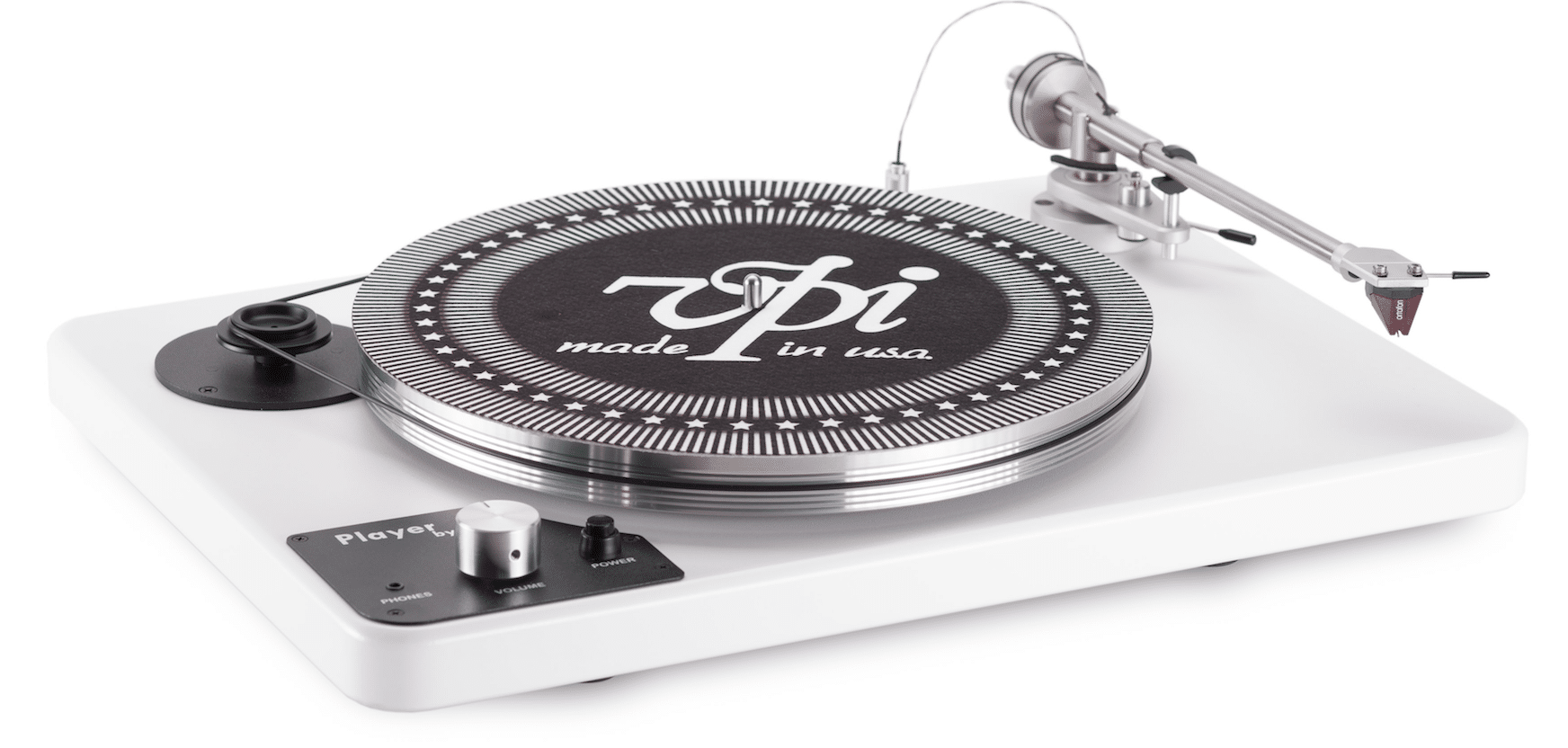
A modern take on the ‘all in one’ concept. This particular collection of technologies, though, includes the phono amplifier plus a headphone amplifier built inside the chassis. Because of the latter, you don’t have to buy a pair of speakers if you’re happy to go headphones only. The arm is an excellent one while the Ortofon cartridge is top notch. It’s not cheap but if you’re a music fan with a healthy budget, you like the Apple-esque approach that says that you don’t have to fiddle and mess around with the hardware – it just works, then this is the deck for you. This is a true hi-fi turntable but still offers great value for money and ease of use, even at this price.
IS THIS GOODBYE? [sniff]
Not quite. I hope you’ve enjoyed this turntable guide or, at least, the guide itself has either given you some help in your quest for your first turntable or has prompted you to think carefully about your proposed choice. Just to remind you, if you have any questions, complaints, notes, points of order, large monetary donations or you wish to include me in your Will, then contact me at The Audiophile Man, www.theaudiophileman.com
[Don’t forget to check out my Facebook Group, The Audiophile Man: Hi-Fi & Music here: www.facebook.com/groups/theaudiophileman for exclusive postings, exclusive editorial and more!]

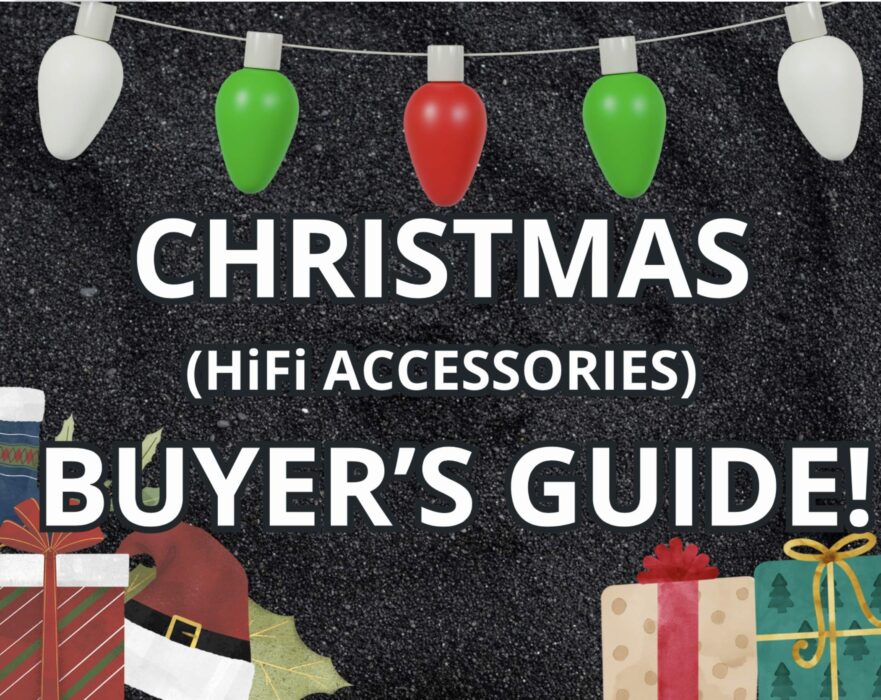

Hi Paul,
Amazing article and great comments !
I got a Rega Planar 1 with the Rega FonoMini A2D.
I’m thinking for buying the Q Acoustics 3020i for the speakers.
The part I’m not sure about is the ampli…
I’ve read in the comments above that the Cambridge Topaz AM10 would do the trick but it has already a build-in phono amplifier.
For this price range, are there better ampli that I could get (knowing I already have phono amplifier) ?
Hi Victor – there’s others amps out there, yes, but most are nasty Chinese-made amps that I would avoid. Getting a nice amp at that price is a toughy, I have to admit. There’s not a lot of choice out there that I’d point at. Don’t worry about the built in phono on the Topaz, your external Rega will just bypass that. It’s basically a freebee anyway and doesn’t really matter in terms of the price you’re paying.
Great, thanks for the reply !
And in terms of cables I need to connect the 4 pieces together (from turn table to speakers): do they come when I buy the phono, ampli, speakers or should I get them separately ?
Is one cable more important than the others ?
Thanks
You should already have cables from the turntable to the phono amp. You’ll need a pair of interconnects from the phono to the amp and a pair of speaker cables. Grab the best QED cables you can afford from Amazon. Price moves upwards with quality here.
Hi Paul,
Am looking to buy a system with a budget of approximately £1000 Рhave looked at Rega but know very little about sound systems. I want to buy a good quality system that is easy to use. Would appreciate any advice. Am UK resident. Many thanks.
Hi Gerard – can you give me a broad list of the type/content of your proposed system? Vinyl only?
Yes, just vinyl.
I was going to just use vinyl, not bothering with wireless or converting vinyl via USB. See that Rega have a System One coming out soon at £999.99. Would appreciate your advice.
Hi Gerard
I would look at a Rega Planar 1 – https://theaudiophileman.com/planar-1/
Grab an external phono amp, something like the Rega Fono: https://www.amazon.co.uk/Rega-Fono-Mini-A2D-Mk2/dp/B07NCYJ1PR/ref=sr_1_1?crid=251AK71Q1N42V&dchild=1&keywords=rega fono mini a2d&qid=1588587823&s=electronics&sprefix=rega phono,electronics,150&sr=1-1
Then a low cost amp – something like an Onkyo 9010: https://www.amazon.co.uk/Onkyo-A-9010-UK-Integrated-Amplifier/dp/B00SH2JSJW/ref=sr_1_1_sspa?crid=3J1E9CU7QR9OV&dchild=1&keywords=onkyo a-9010&qid=1588587857&s=electronics&sprefix=onky,electronics,150&sr=1-1-spons&psc=1&spLa=ZW5jcnlwdGVkUXVhbGlmaWVyPUExRkJPNTUwTjNaUDJZJmVuY3J5cHRlZElkPUEwMjgxMzg3V1pLVEFYNVpQT1REJmVuY3J5cHRlZEFkSWQ9QTAzMTUxNTAzREFVSjkxS0hNVzJOJndpZGdldE5hbWU9c3BfYXRmJmFjdGlvbj1jbGlja1JlZGlyZWN0JmRvTm90TG9nQ2xpY2s9dHJ1ZQ==
And then a pair of speakers – the Q Acoustic 3020i would do well: https://theaudiophileman.com/3020i-q-acoustics-speakers-review/
Then look at Amazon and buy the best QED cables you can afford to connect everything together.
Many thanks for your advice, Paul. Will start looking into the links you have provided.
Hey Paul!
Thanks for this in depth guide. I just purchased a rega planar 2 and am looking for the best set up. It seems getting each piece separately for setup is best. Would you recommend going for a pair of active or passive speakers?
Any recs on a phono amp and passive speaker?
Thank you,
Mel
Hi Melinda – no problem, what’s your budget on the new proposed hi-fi please?
I would say budget to midrange, leaning more towards midrange budget as I don’t want to sacrifice sound. Is worth spending more on the amp or the speakers?
Exactly how much would that be Melinda?
Hi Paul, I am looking to start my vinyl set up. I would like to focus on sound quality, maybe get a receiver to play with my phone while not using the vinyl on my speakers. I have a budget of 2000 – 3000. Been eyeing the pro-ject X2 and a pair of Q acoustic bookshelf speakers, but am a complete beginner with very keen interests to upgrade along the way. Would love to get your input on the player and recommendations if any
Hi Azriel – ok, so you want to play vinyl but a system to stream? How would you want to do that, via basic Bluetooth or some other way?
Hi Paul, yes I am thinking a basic Bluetooth receiver as its mainly for vinyl and am just aiming for an easy option thats not too particular for music streaming
Okey dokey – what currency is the budget, incidentally?
I am putting it in USD, but I’m in Singapore so its about 3500 – 4000 sgd
OK, with that budget, I’d place more emphasis on the turntable and phono amplifier. That’s the most important part of the chain because the turntable is the bit that extracts the detail. Your amp/speakers only processes what the turntable hands off to those components.
Maybe you an advise me on price differences where you live because that can make a difference to the final budget.
Using the UK as a gauge though, I’d look at a Rega Planar 3 turntable – ¬£650
Moon LP110 V2 phono amplifier Р£300
Audiolab 6000A amp (which include Bluetooth streaming) Р£600
and Q Acoustics 3030i speakers £329
You’ll also need good cabling (get the best QED cable you can afford) and a decent hifi rack.
Look at Atacama for shelving: http://www.atacama-audio.co.uk
Good quality cables and shelving are very important.
I have reviews of most of the above on this site, if you need them.
Thank you so much for the recommendations.
Apologies for my lack of skills to search but i failed to find any reviews for the rega planar 3 even while using the search button. Could you link me to it kindly please?
Would you also recommend something from the Pro-ject range as well? Rega Planar is unfortunately extremely rare to find in Singapore and the only shop carrying any RP only carry Rega Planar 1.
Apologies – the ‘3’ is one review I didn’t do 🙂 I do like it, though. The Pro-Ject RPM 3 Carbon is very nice and the Funk Firm Gett! (exclamation point included) is excellent too and can be bought direct form the UK company here – the review of that is on this site…definitely 🙂
Hi Paul,
Thanks so much for the great article. I’m pretty new to the vinyl world, but got myself a Riga Planar 1 turntable and loving it.
I’m hoping to get your advice on speakers though. What is your opinion/advice on analogue vs digital speakers?
I already had some Sonos speakers for streaming/CDs etc. so got a Sonos port to connect to the turntable. However, does converting the analogue signal to digital degrade the quality in anyway and should I be considering analogue speakers instead?
Thanks for your question, Charlie. Are you talking about using powered speakers here when you talk about digital? Do you have an amp or are you looking to buy a pair of powered speakers so that you can include the amp/speakers as one unit? Also, do you have a budget figure in mind?
Hi Paul,
I’m probably getting my terminology all wrong here… sorry, complete newbie!
What I’m really trying to work out is whether I keep the Sonos set up I have to use with my turntable, or would this be degrading the sound quality of the records, and be sacrilege!
I guess I had meant powered speakers, but happy to explore other options. Happy to buy a separate amp or keep it in the same unit. In terms of budget probably around the £500-£800 mark for speakers plus amp.
No worries, Charlie – to accompany the Rega, I’d look at the SA3 amplifier: https://theaudiophileman.com/sa3-integrated-amplifier-review-iotavx/ alongside a Rega Fono phono amplifier (around ¬£90 from Amazon) plus Q Acoustic 3030i speakers: https://theaudiophileman.com/3030i-speakers-review-q-acoustic/. To connect them, grab the most expensive QED cables from Amazon, performance follows price with these.